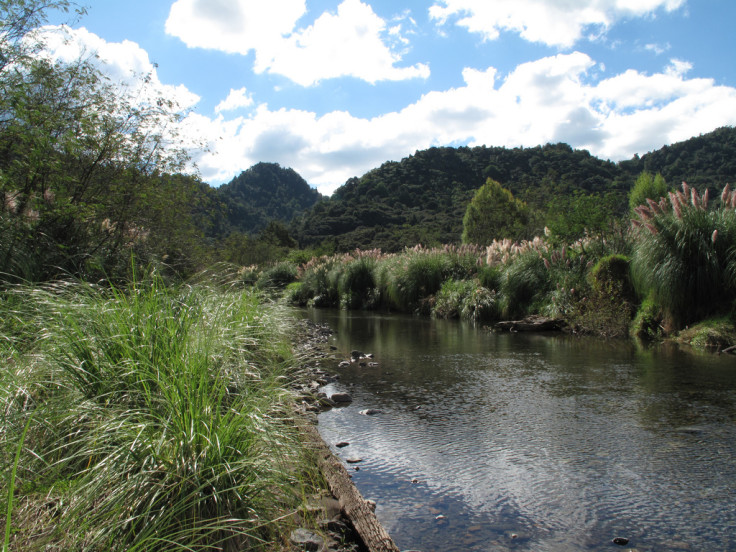New Zealand: Geologists solve tectonic plate mystery by exploding rock

An international group of geologists have been having a blast in New Zealand detonating half a tonne of explosives in rock layers beneath the Earth in order to solve the mystery of how tectonic plates shift.
It might sound like a souped-up episode of popular British science TV show Brainiac but a research experiment has been carried out on North Island to stimulate rebounding seismic waves.
Their paper, A seismic reflection image for the base of a tectonic plate, is published in the journal Nature.
Researchers from New Zealand, the US and Japan pumped 500kg of dynamite into a dozen 50km-deep steel-cased holes spread over a distance of nearly 100km.
Once detonated, the underground controlled explosions caused the Earth to shake and produce a loud noise that could be heard from 10km away.
The holes were dug in a line parallel to the border where the Pacific and Australian tectonic plates meet at an angle of 12-15 degrees, which is perfect for creating seismic waves that reach the base of the tectonic plate and then rebound to the earth's surface.
Creating their own seismic waves
As seismic waves encode information about each of the layers of the Earth they pass through, they can be used to build detailed images of the Earth's crust and the geologists recorded over 1,000 seismographs.
"The idea that Earth's surface consists of a mosaic of moving plates is a well-established scientific paradigm, but it had never been clear about what actually moves the plates around," said Professor Tim Stern of Victoria University's School of Geography in Wellington, New Zealand, one of the researchers on the study.
"To work this out requires an understanding of what happens at the bottom of a tectonic plate. It's been difficult to obtain the necessary detailed images at such great depths using the usual method of recording natural earthquake waves.
"But by generating our own seismic waves using higher frequency dynamite shots, we were able to see how they became modified as they passed through different layers in the earth. This, along with some new techniques in seismic reflection processing, allowed us to obtain the most detailed image yet of an oceanic tectonic plate."
How do tectonic plates move?
The researchers discovered the existence of a narrow, lubricating layer of rock about 73km down that is only 10km thick, which is soft and weak enough for the tectonic plates to slide over by several centimetres a year.
"This means that the plates can be pushed and pulled around without strong resistance at the base," Stern said.
"A weak slippery base also explains why tectonic plates can sometimes abruptly change the direction in which they're slipping. It's a bit like a ski sliding on snow."
The slippery layer of rock explains how tectonic plates work but the researchers still don't know what causes the effect.
One of the leading theories is the tectonic plates are pulled or pushed along their edges, while another theorises the tectonic plates could be connected to a deeper layer of hot mantle that drags them through convection.
Stern said: "Understanding this boundary between the base of cold, rigid tectonic plates and the underlying hot, convecting mantle underneath is central to our knowledge of plate tectonics and the very formation and evolution of our planet."
© Copyright IBTimes 2025. All rights reserved.






















